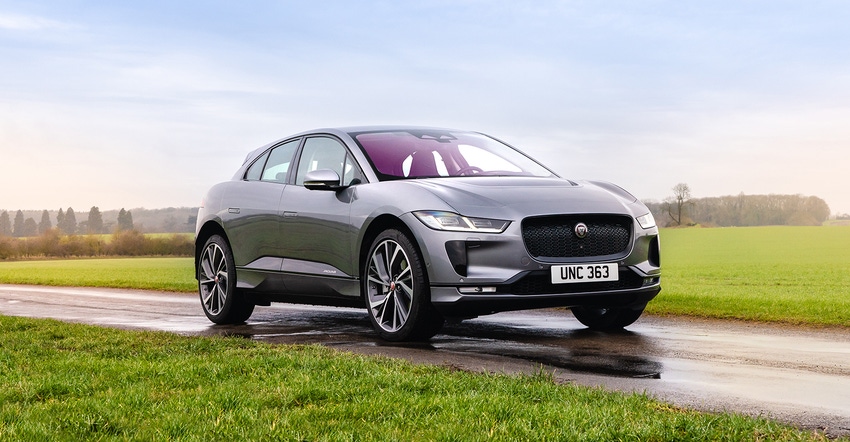Battery Fire Fears Prompt Jaguar I-Pace EV Recall
Voluntary recall of all US deliveries follows eight car fires and over a year of investigation.

Lithium-ion battery fires have continued to be a concern as the electrification of mobility continues. Most recently, there have been concerns about EV buses and e-bikes in the news—but the danger of electric automobile fires is never absent from the headlines for long. To that point: Jaguar Land Rover has announced the voluntary recall of approximately 6,400 Jaguar I-Pace EVs, spanning model years 2019 through 2024, following eight reported customer vehicle fires here in the US.
The company acknowledges that all I-Pace models delivered in the US, produced at Magna Steyr's Graz Vehicle Assembly Plant in Austria, are susceptible to lithium-ion battery thermal overloads. The I-Pace EV uses a 90-kWh battery made by LG Energy.
According to filings submitted to the National Highway Traffic Safety Administration (NHTSA), Jaguar first became aware of the issue in February 2022 when an internal engineering team began investigating batteries that had experienced thermal overloads. By August 2022, field inspections were conducted on fire-damaged I-Pace models, leading to the identification of a connection to all I-Pace vehicles in March 2023.
Inconclusive investigation
Through April 2023, the investigation pursued the task of defining and determining the scope of the at-risk population. During this period, additional field reports of vehicle thermal overload incidents, involving both smoke and fires, were received. The engineering team examined these vehicles and conducted an analysis of the Diagnostic Over The Air (DOTA) data from each of them.
“Although the Engineering team had not made a determination of whether the HV battery pack assembly is defective and a cause of reported thermal overload conditions,” on May 18 the NHTSA Recall Determination Committee (RDC) decided, “out of an abundance of caution,” to initiate a voluntary safety recall for all affected vehicles. Given the absence of a definitive conclusion, the RDC determined that the scope of this issue encompasses all I-PACE vehicles manufactured to date.
According to NHTSA, recalled vehicles will receive an update to the Battery Energy Control Module (BECM) software which will enable the monitoring of the battery pack assembly's operational status, specifically identifying conditions that could potentially lead to a thermal overload. With this enhanced software, drivers will receive advanced warnings regarding their battery's condition. In cases where the software detects a risk, the charging capacity of the battery will be limited to 75%.
In the event of such a warning, the driver will be prompted to visit a Jaguar retailer for diagnosis and, if necessary, repair. At the retailer, the affected battery module/pack will be thoroughly inspected and, if deemed necessary, replaced. Owners will not incur any charges for this repair.
Jaguar has acknowledged eight reports of I-Pace EV vehicle fires in the US to date—the most recent on May 3 of this year. It’s worth noting that no related accidents or injuries have been reported in relation to the fires.
Consumers wary of purchasing EVs usually first cite concerns about range and access to charging—but fear of car fires is often cited as well. With federal and corporate investments, charging access is improving; meanwhile, EV range continues to improve as well. That continuing good news may unfortunately see the issue of burning become the most burning issue in the mind of EV-wary consumers.
About the Author(s)
You May Also Like





